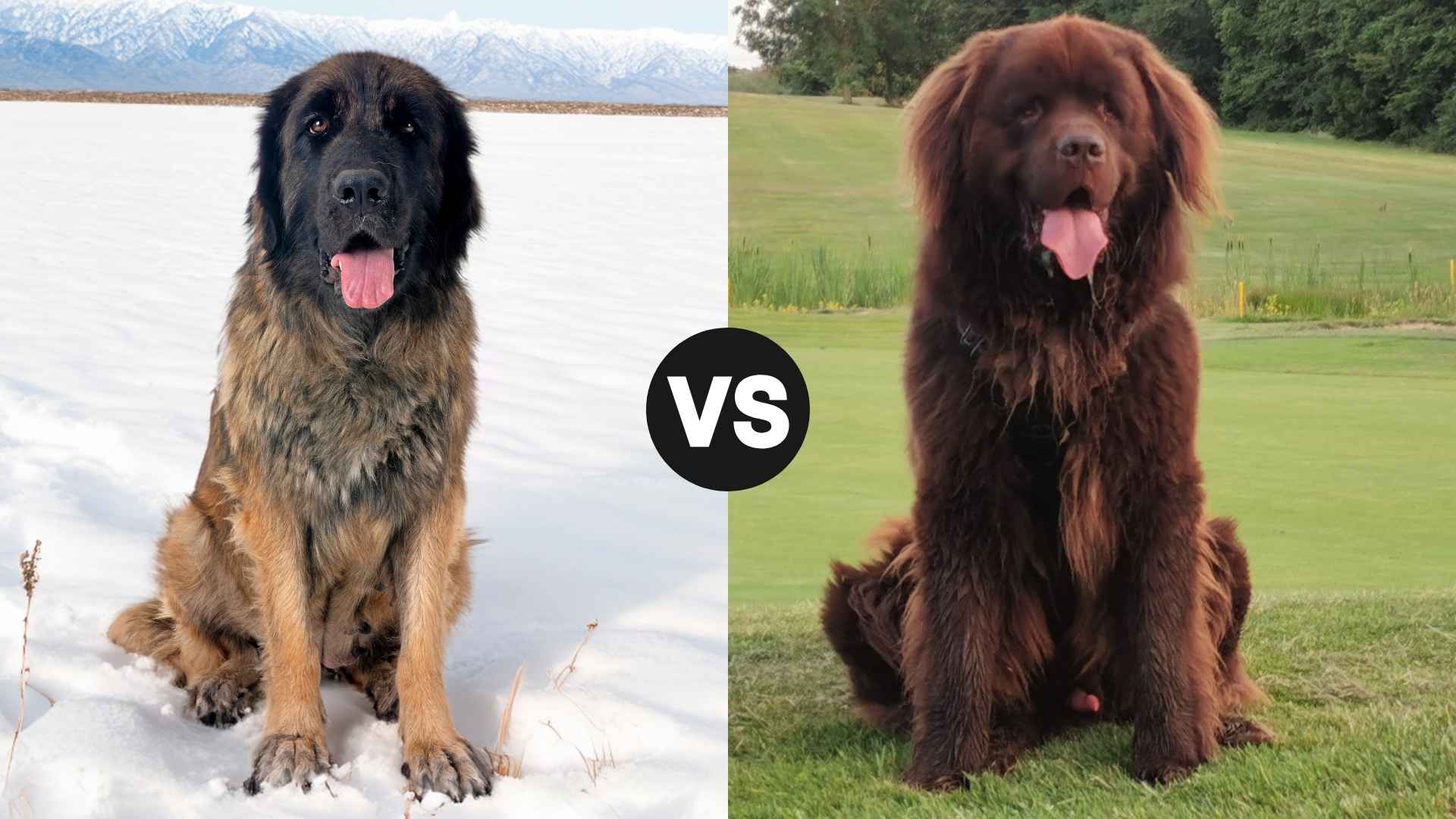When it comes to canine companions that resemble fluffy lions or gentle bears, few breeds captivate the imagination like the Leonberger and the Newfoundland. These two colossal cuddle bugs are known for their loyalty, love for water, and hearts as big as their paws.
But if you’re considering adding one of these majestic breeds to your life, the decision isn’t just about looks—it’s about lifestyle.
While the Newfoundland is famous for being a natural lifesaver with a calm, steady temperament, the Leonberger brings a touch of elegance, energy, and regal fluff to the mix.
Both breeds are affectionate and family-friendly, but each comes with its own set of needs, strengths, and little quirks. Whether you dream of long walks in the woods or weekend swims at the lake, this comparison will help you understand which of these furry titans is the perfect match for your household.
Leonberger vs Newfoundland
Breed Origins
If you’re a fan of dogs that are bigger than your dreams (and possibly your furniture), the Leonberger and the Newfoundland are the true heavyweight champions of the canine kingdom. But don’t let their size fool you—these giant fluffballs come from noble roots and heroic hearts.
Leonberger
Imagine 1800s Germany, where a man named Heinrich Essig had an ambitious vision: “What if I could create a dog that looked like a lion but had the heart of a lapdog?” And so, the Leonberger was born—a majestic mix of Saint Bernard, Newfoundland, and Great Pyrenees, crafted to turn heads and charm European royalty. These large dogs quickly rose to fame, gracing the portraits of emperors and queens like the original four-legged influencers of their time. As per PetMD, though the breed nearly vanished during World War I and II, the resilient Leonberger made a comeback. Today, they shine in search-and-rescue missions and thrive as devoted, gentle family companions.
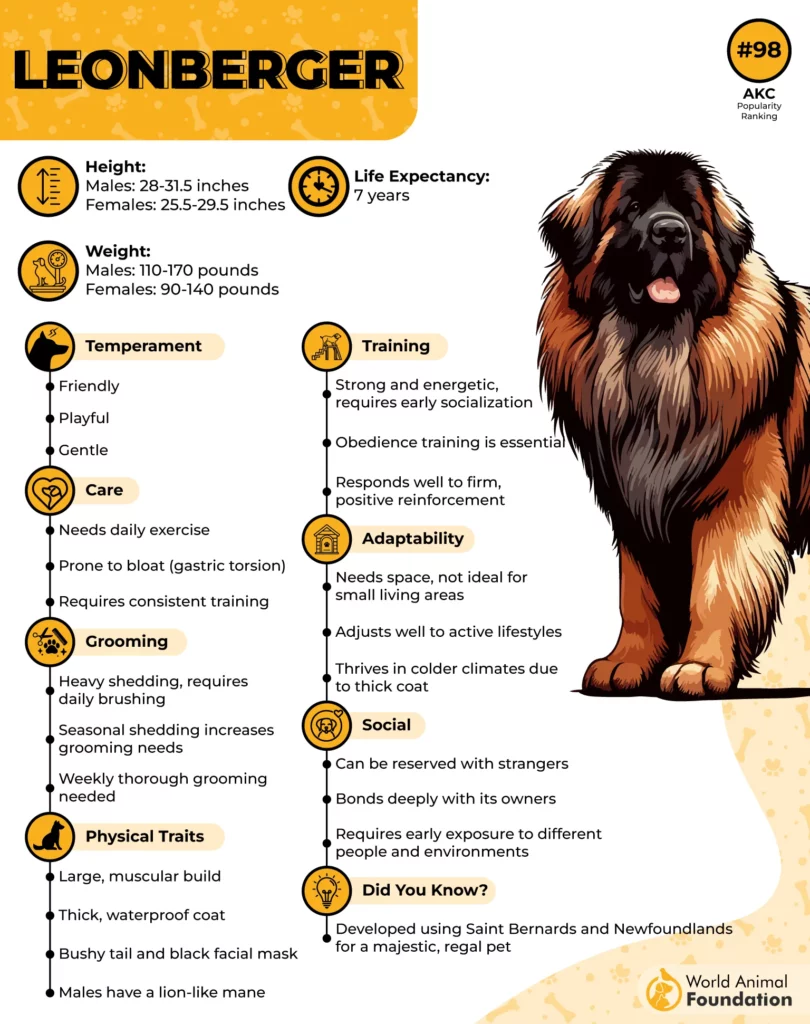
Newfoundland
Now shift your imagination to the rugged coastlines of Canada, where sailors needed a sturdy sidekick who could swim through icy waves, haul nets, and save people from drowning. Enter the Newfoundland: a born lifeguard wrapped in a bear suit. These large breeds were the unsung heroes of the sea—pulling carts on land and rescuing humans at sea long before Baywatch made it cool. According to the American Kennel Club (AKC), the sweet-tempered Newfoundland, or “Newfie,” is well-known for being a wonderful companion and has earned a reputation as a patient and watchful “nanny dog” for children.
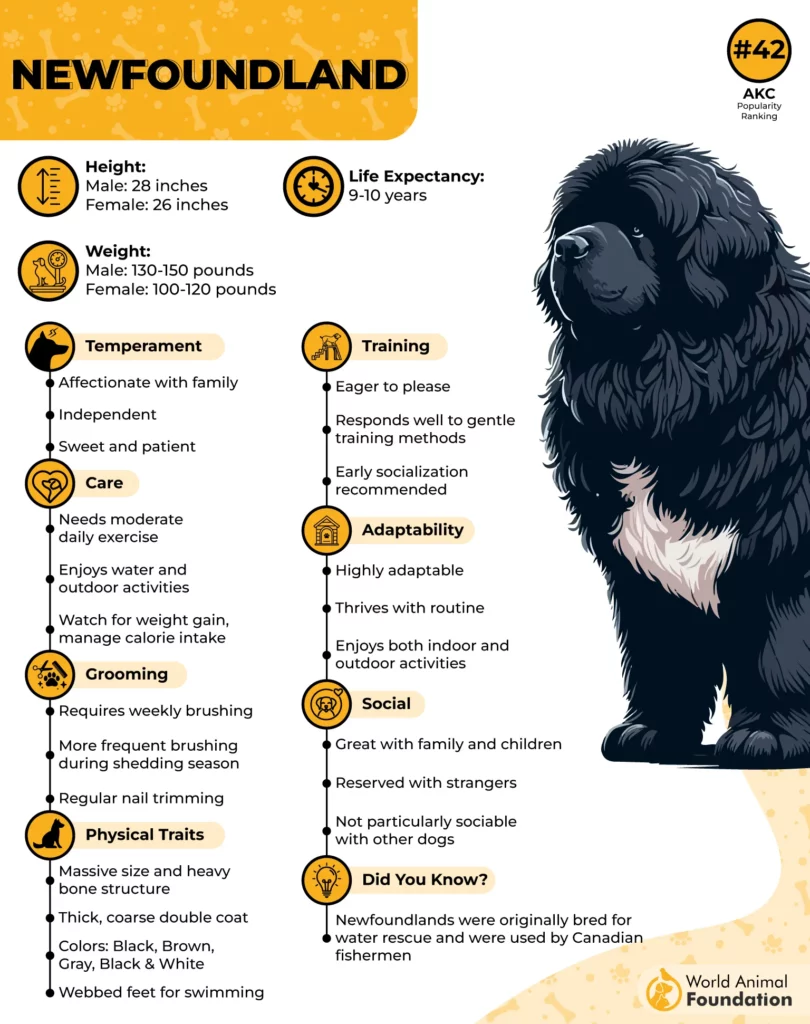
Physical Build and Body Type
Leonberger:
Male Height: 28 to 31.5 inches (at the shoulder)
Female Height: 25.5 to 29.5 inches
Male Weight: 110 to 170 pounds
Female Weight: 90 to 140 pounds
Leonbergers are like the Fabio of dog breeds—flowing mane, dreamy eyes, and a slow-motion trot through a meadow. These dogs don’t walk; they glide. Towering over most humans when on hind legs, they’re athletic yet refined, like a linebacker in a tuxedo.
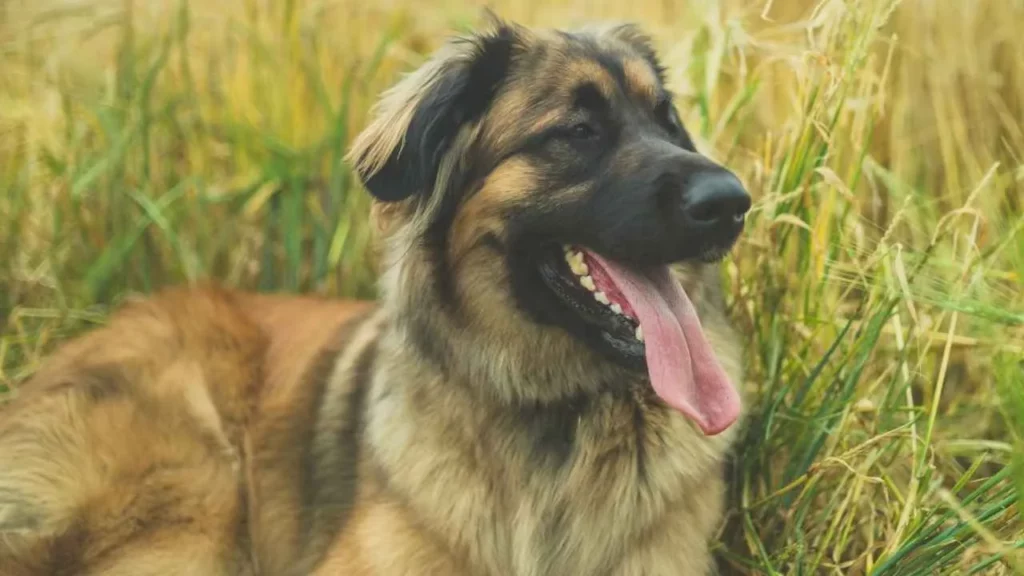
They rock a gold-to-rust double coat that looks like it’s been styled by an expensive salon and wear a black facial mask that screams “I’m mysterious, wise, and I know where you hid the snacks.”
Majestic? Check. Intimidating? Maybe until they try to sit in your lap like a 12-pound pug.
Newfoundland:
Male Height: 28 inches average
Female Height: 26 inches average
Male Weight: 130 to 150 pounds
Female Weight: 100 to 120 pounds
The Newfoundland is a walking marshmallow with the strength of a forklift. They’re not just big—they’re cavernous. With a thick, water-resistant coat, these large dogs were engineered to leap into freezing water and drag humans to safety. Some even have better swimming skills than most lifeguards (and let’s be honest, better hair too).
Newfies come in colors like black, brown, gray, and the dashing Landseer tuxedo (black and white), which makes them look like they’re always ready for a formal dinner—or a mud bath. Their massive heads and soulful eyes can melt the iciest heart or guilt you into giving up the last piece of bacon.
Coat Characteristics
When it comes to coats, both of these breeds show up like they’re dressed for winter 24/7. But while both are walking snuggle-piles, their coats serve very different purposes.
Leonberger:
Texture: Soft but slightly coarse, like a lion’s mane mixed with a high-end shag carpet.
Length: Long, dense, and double-coated—designed to insulate, but also look fabulous.
Mane Alert: Males, in particular, rock a majestic mane around their neck and chest. You half-expect them to roar.
Water Resistance: Decent, but not quite the canine raincoat the Newfie wears.
Colors: Golden to reddish-brown, sometimes with black facial masks and feathered tails.
Grooming Needs: Brush 2–3 times a week (or daily during shedding seasons unless you want to knit a second Leonberger). Tends to tangle, especially behind the ears and under the legs.
Newfoundland:
Texture: Thick, coarse outer coat with a soft, dense undercoat — like a bear in scuba gear.
Length: Medium to long, water-resistant, and weatherproof. Basically, a built-in wetsuit.
Waterproof Power: Seriously — they can swim in freezing waters and shake it off like it’s no big deal.
Colors: Black, brown, gray, or the classic black-and-white “Landseer” pattern.
Grooming Needs: Weekly brushing is a must (more during shedding). And prepare for that signature Newfie “wet dog” smell after their aquatic adventures.
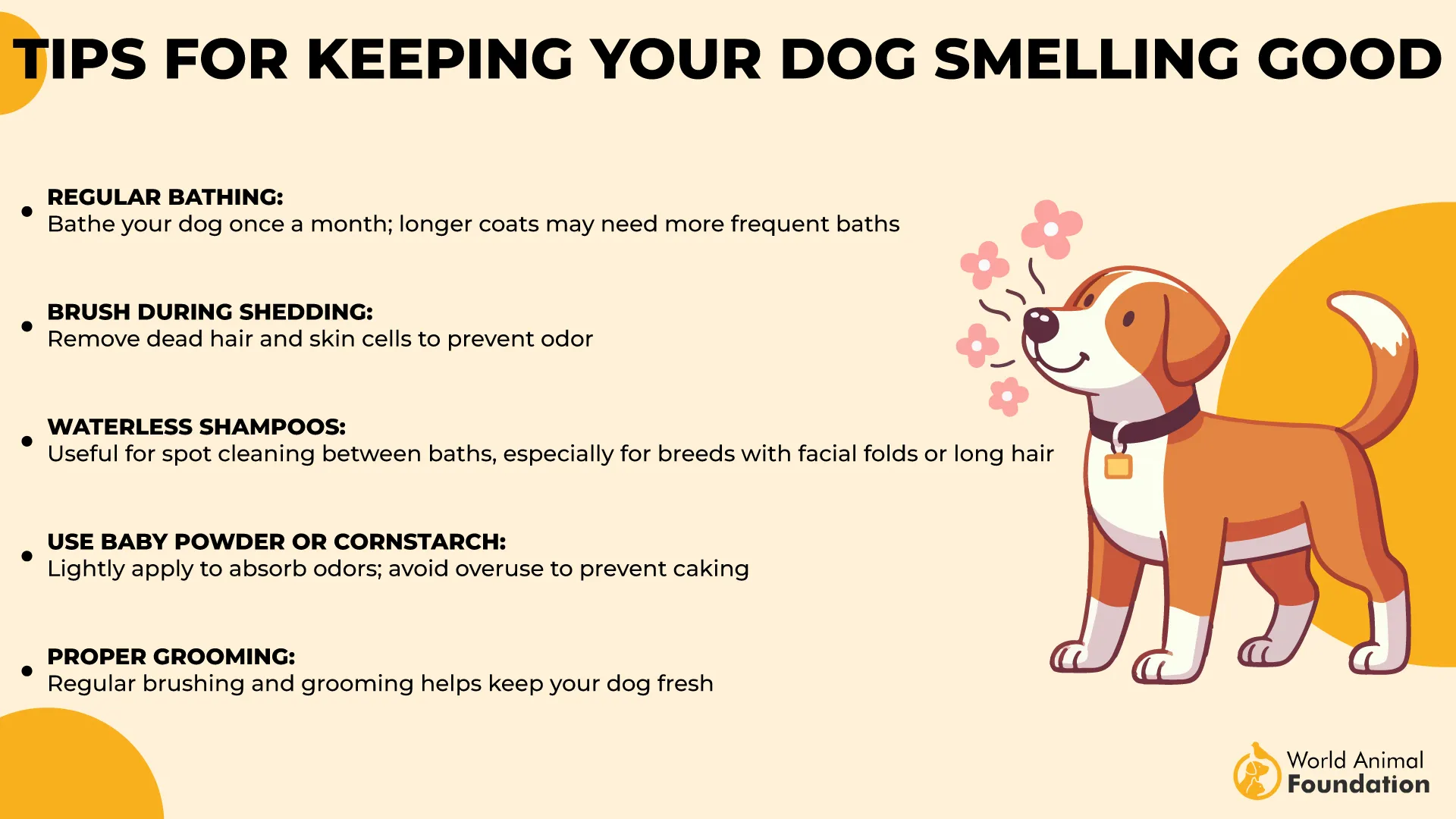
Temperament and Personality
Now let’s talk about what really matters—their personalities. Spoiler alert: both of these breeds are basically giant therapy dogs in disguise.
Leonberger:
Temperament: Friendly, calm, and confident. They’re like that one friend who’s always the responsible one but still down for spontaneous fun. Purina says Leonbergers are easy-going, placid, loyal, and even-tempered. However, they are also self-confident and strong, occasionally showing traits of their guard dog heritage.
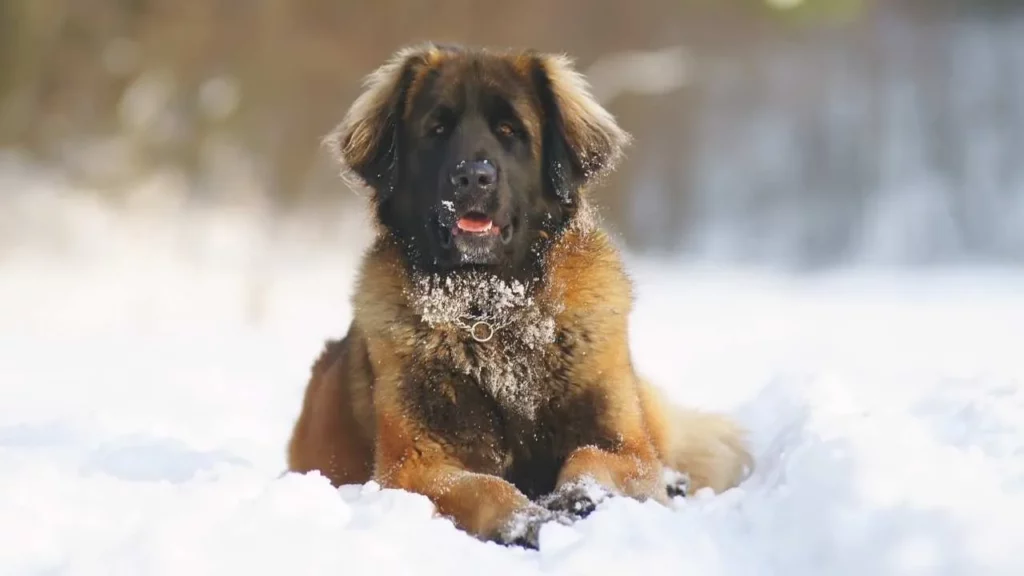
Personality Perks:
Affectionate and loyal to the core
Alert but not aggressive — excellent watchdog, terrible guard dog
Great with kids (they’ll become the kids’ oversized fuzzy bodyguards)
Quirks: They’re sensitive souls. Harsh training = sad Leo face. Positive reinforcement? Now you’ve got a loyal best friend for life.
Imagine if a golden retriever and a lion had a baby that wanted to hike, swim, and be your emotional support animal all at once.
Newfoundland:
Temperament: Calm, sweet, and patient. If Buddha came back as a dog, he might be a Newfie.
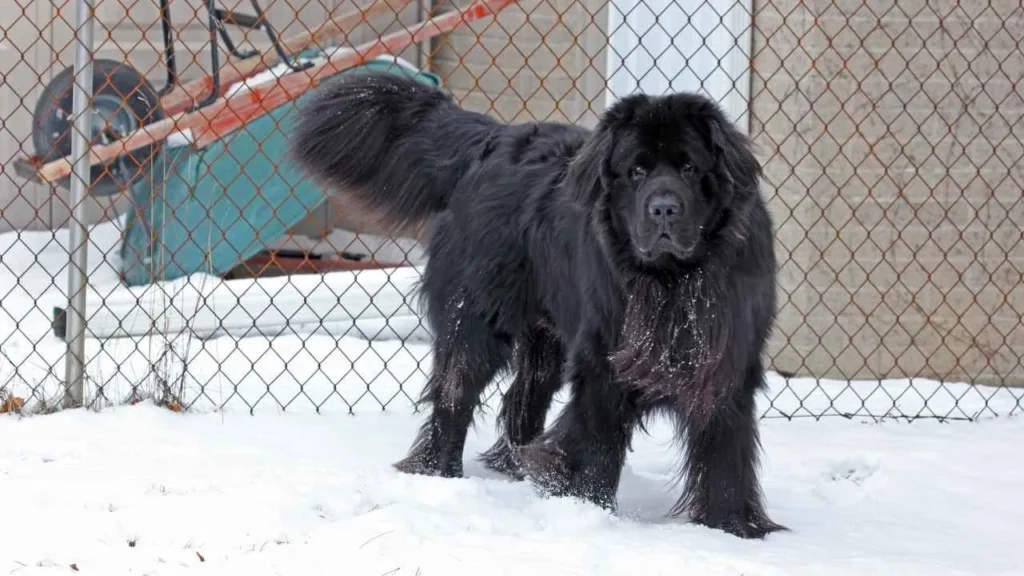
Personality Perks:
Extremely friendly and gentle, even with toddlers and small animals
Loves water (seriously, some will rescue you even if you don’t want to be rescued)
Loyal and laid-back — they’re the chill couch potato you can trust with your secrets
Quirks: Can be stubborn if not trained early. They’ll listen—eventually—but maybe after a nap and a snack.
Think of the Newfie as your full-time emotional support floatation device with paws. They don’t just love you—they’re ready to save you, too.
Swimming Abilities and Style
Newfoundland:
Swimming Style:
The Newfoundland doesn’t just like water—it’s basically part fish. These dogs were born for the water, bred to haul fishing nets, swim through icy waves, and literally rescue humans from drowning. They’re one of the few dog breeds with webbed feet, like furry flippers designed for maximum paddling efficiency.
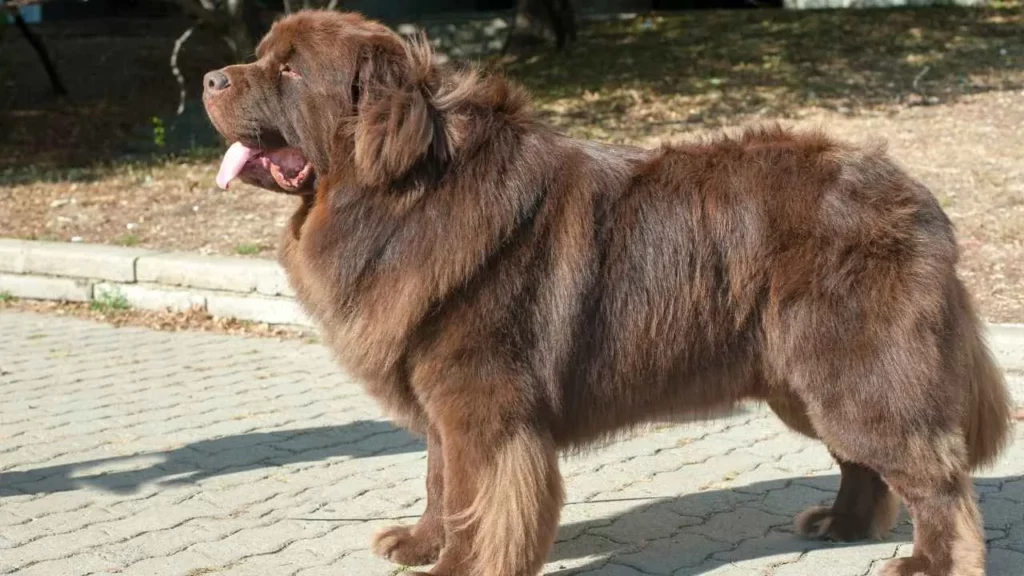
Fun Fact:
Newfies can swim in stormy seas and have a natural lifesaving instinct. Many are used in water rescue missions and even undergo official water rescue training! If you fell off a boat, your Newfie would dive in with zero hesitation—probably faster than your friends.
Leonberger:
Swimming Style:
Leonbergers may not have the same rescue-dog history as Newfoundlands, but don’t underestimate their water game. Thanks to their Newfoundland ancestry, these majestic beasts inherited a natural love for swimming—and a serious splash radius. They’re known to enjoy lake days, boat rides, and pool plunges. They might not dive in to save you unless you’re holding a treat, but they’ll swim beside you like a fluffy yacht companion.
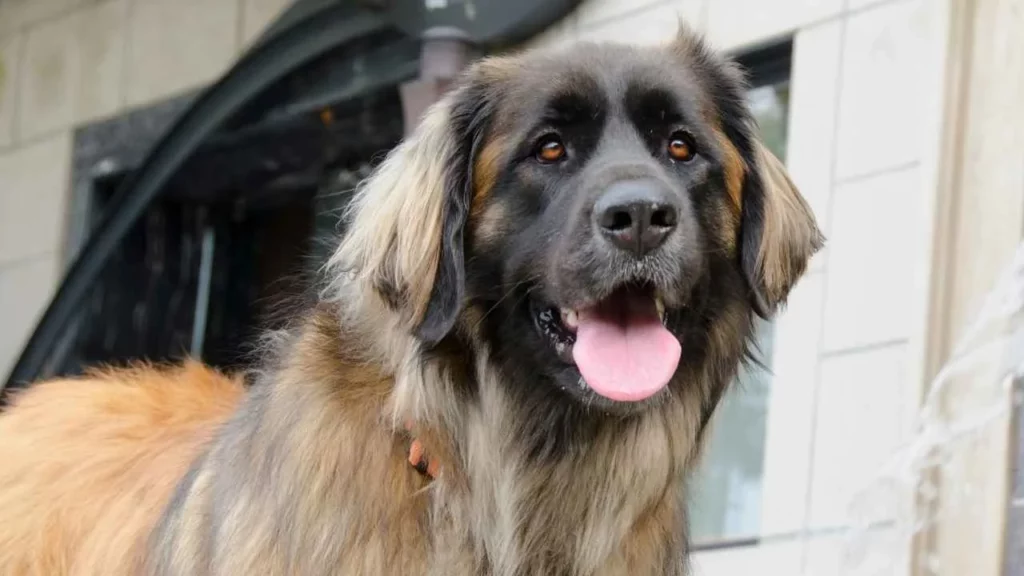
Fun Fact:
Some Leonbergers also have webbed feet, making them surprisingly nimble in water. But instead of saving lives, they’d rather swim up and ask if you’ve got snacks in your wetsuit.
Allergies and Grooming Needs
Nope. Neither Leonbergers nor Newfoundlands are hypoallergenic. In fact, if you’re allergic to dog dander, their fluff alone might send your sinuses packing for the weekend. If you want a hypoallergenic dog, you’ll have to trade in the furball for something poodle-y.
Leonberger:
Shedding: Oh, they shed. Seasonally? No. More like reasonally — every reason, all year.
Brushing: 2–3 times a week, more during spring and fall blowouts. Or risk forming a second dog from the fluff on your couch.
Bathing: Every couple of months, or when they’ve rolled in something questionable (which they will).
Extra Needs: Ear checks and nail trims. And don’t forget to brush out the mane like they’re headed for a red carpet.
Newfoundland:
Shedding: Also yes. But bonus: their fluff holds water like a sponge. After a swim, prepare for a Niagara Falls-level shake.
Brushing: At least 2–3 times a week to keep mats and tangles away.
Bathing: About once a month (or when their natural eau de “wet dog” gets too real).
Extra Needs: Keep that undercoat in check. Otherwise, it turns into a tangled dreadlock of doom.
Conclusion
In the debate of Newfoundland vs Saint Bernard, these two breeds are beloved gentle giants with many similarities. Both are affectionate, intelligent, and trainable, requiring patience, early socialization, and positive reinforcement—never harsh corrections. Their large size and muscular bodies demand proper exercise, nutritious food, and regular vet care to manage health issues they may be prone to, including some life-threatening conditions. To stay healthy, they need mental stimulation, regular grooming, and brushing to prevent mats. These puppy-turned-giant companions do well with other dogs, other pets, and new people when properly socialized. Whether in the house or outdoors, they’ll protect their family and easily catch your heart. With a similar average lifespan to other breeds, both make loyal and loving pets.


